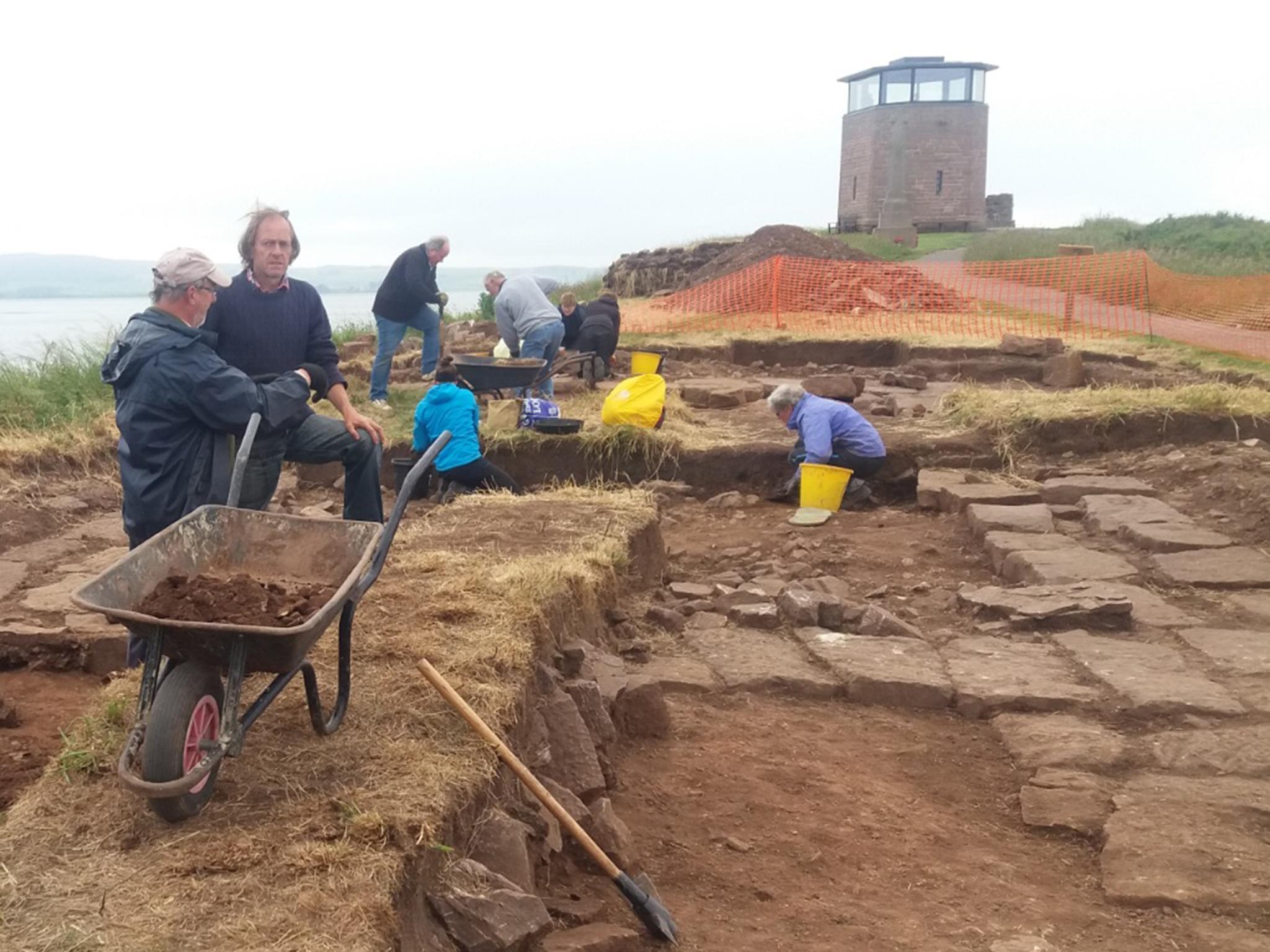One of Britain’s oldest churches discovered on Holy Island of Lindisfarne
‘It is one of the most important discoveries from the early medieval period that has been made in Britain over recent decades’

Archaeologists have discovered one of Britain’s oldest churches.
The find – on the Holy Island of Lindisfarne, off the Northumberland coast – is of great historical importance because the newly discovered ancient church may originally have been built in or shortly after the mid 7th century AD as part of the monastic spiritual epicentre from which much of northern and central England was eventually Christianised.
It’s also important because it is likely to have been a key site at the spiritual heart of the early 8th-century monastic community that made Britain’s most famous early medieval illuminated manuscript – the Lindisfarne Gospels.
The evidence suggesting that this could be the site of one of Holy Island’s original early Anglo-Saxon period churches – perhaps even one built by the founder of Lindisfarne, St Aidan – is complex but persuasive.
The archaeological excavation has revealed that the monks chose the most challenging and difficult location to build their church – potentially for politically symbolic reasons.
The building stood on a totally exposed, extremely wind-blown rocky promontory facing directly towards the great royal palace of the monks’ first patron and benefactor, north-east England’s most important early Christian king, the 7th century St Oswald of Northumbria. The church was constructed just two or three metres from the cliff edge. The location was known in Anglo-Saxon times simply as “The Precipice”.
Also suggesting an early, potentially late 7th century, date is the very primitive ‘pre-architectural’ style of the church’s masonry.
So far, the archaeologists have found dozens of pieces of broken masonry – including crudely-worked window surrounds – in a style suggesting that the mason was more accustomed to working in wood than in stone.
A final potential clue to its age has been found at the extreme eastern end of the church. It is the probable base of what may well have been the original altar installed there by St Aidan in or immediately after he founded the monastery in AD 635.
It can be potentially associated with Aidan because it’s believed that changes in English church layout tradition after the mid 7th century meant that altars were no longer to be located up against the east wall of the church, but several metres further west.
Interestingly, the building was constructed of gleaming white sandstone that would have reflected sunlight particularly well, giving the impression that it was quite literally radiating the purest white light. The gleaming structure perched on its 20-metre high clifftop would have been clearly visible from the royal palace at Bamburgh as a white building surrounded by sea.
“It is one of the most important discoveries from the early medieval period that has been made in Britain over recent decades,” said Peter Ryder, an archaeologist specialising in medieval ecclesiastical buildings who has been involved in recording the masonry from the newly discovered early church.
The archaeologists have also discovered the massive foundations of what appears to have been a large signalling tower on the same promontory – presumably to enable simple messages to be sent directly to the king’s palace at Bamburgh, some four miles across the sea to the south.
The eight metre square tower (with walls 2.5 metres thick) would probably have been up to 12 metres high – and would also have been used to communicate with monks living on the Farne Islands, seven miles away. It’s known from ancient accounts that a tower on that promontory was used, for instance, to receive a beacon signal from those monks when St Cuthbert (subsequently regarded as the patron saint of northern England) died there in AD 687.
The buried remains of the newly discovered early church, currently being excavated by the archaeologists, show that the building was at least partially made of stone.
However, it is almost certain that the initial mid-7th century church or (churches) on Lindisfarne were originally constructed purely of timber. We also know that the Lindisfarne monks viewed their earliest timber churches with such reverence that, in the 7th or early 8th century, they encased one in pure lead to preserve it – and later (in the 9th century) deconstructed it or another timber church and took it to the mainland to prevent it being destroyed by the Vikings.
It is, therefore, conceivable that the newly discovered stone church on the Lindisfarne clifftop was built in the mid or late 7th century as a protective structure around what may have been St Aidan’s original timber church. If that is not correct, then it could be a later Anglo-Saxon stone rebuild of that church, although, on balance of probabilities, the primitive nature of the masonry would perhaps argue against that. Alternatively, it could be that a totally new stone church was built on the promontory in perhaps the early or mid-8th century.
Ultimately, only further excavation and scientific testing may solve the conundrum.
The newly discovered foundations and masonry fragments of the church on the wind-blown Lindisfarne clifftop are by far the oldest Anglo-Saxon structural remains found on the island.
The excavation of the church and probable signalling tower is being directed by Newcastle University archaeologist Richard Carlton of the Newcastle-based company, The Archaeological Practice, as part of the Northumberland County Council-backed Peregrini Lindisfarne Landscape Partnership project, majority financed by the Heritage Lottery Fund.
Join our commenting forum
Join thought-provoking conversations, follow other Independent readers and see their replies
Comments